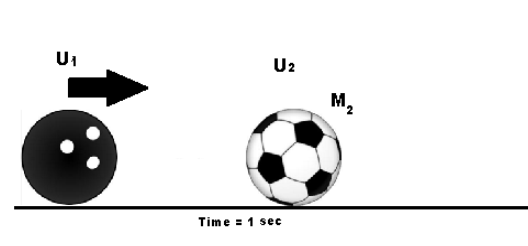Conserving kinetic energy is not merely a scientific endeavor but a profound ecological imperative. Kinetic energy, the energy of motion, governs numerous natural and artificial systems around us. From the flapping wings of a bird to the rolling of a ball, kinetic energy is ubiquitous. Recognizing ways to conserve this energy is essential for enhancing efficiency in our daily activities, decreasing environmental impacts, and promoting sustainability.
At its core, understanding kinetic energy begins with the fundamental equation:
K.E. = ½mv²
Where m stands for mass and v for velocity. This relationship illustrates that the kinetic energy of an object increases exponentially with an increase in its velocity. Hence, behaviors that optimize motion can significantly impact energy conservation. It is this very principle that underlies everything from transportation to athletics, making energy efficiency not only a matter of environmental concern but also one of economic and athletic performance.
One of the simplest yet effective strategies for conserving kinetic energy lies in efficient transportation. Choosing modes of transport that maximize energy utilization can profoundly diminish unnecessary energy wastage. For instance, public transport systems, such as buses and trains, are more efficient than individual car use. This transition allows for more passengers per journey, thus reducing the kinetic energy wasted per individual. Furthermore, bicycles represent an even more sustainable option for shorter distances, translating human effort into kinetic energy with minimal carbon footprint.
Another avenue to explore is the implementation of regenerative braking systems. Commonly found in electric vehicles and hybrid cars, these systems capture the kinetic energy typically lost during braking and convert it back into usable energy. This process not only lessens the overall energy demand but also extends the range of electric vehicles, addressing both kinetic energy conservation and emissions reduction simultaneously.
In residential settings, employing certain lifestyle habits can contribute to the conservation of kinetic energy as well. Simple actions such as walking or cycling instead of driving for short trips reduce reliance on motorized transport, thus saving energy derived from fossil fuels. Additionally, maintaining a well-balanced lifestyle promotes physical fitness, reducing the need for energy-intensive activities, such as using gym equipment, which often relies on electricity for operation.
Incorporating efficient practices in daily routines can also have immediate benefits. For instance, optimizing household energy consumption not only preserves kinetic energy but also translates into significant financial savings. Simple adjustments, such as using energy-efficient appliances, can lead to reduced operational energy expenditure. It is essential to note that certain appliances, even in their stationary state, can draw considerable energy, collectively yielding a large kinetic impact over time.
The fascination with motion is deeply rooted in human history and culture. From the earliest inventions of the wheel to modern engineering marvels, the pursuit of harnessing and optimizing motion continues to grip the imagination. This historical trajectory can inspire contemporary efforts in kinetic energy conservation. For example, understanding historical advancements in mechanics can inform future innovations that exploit kinetic energy more sustainably, encouraging a culture of efficiency and conservation.
Moreover, the concept of kinetic energy transcends the physical realm into areas such as sports and recreation. Athletes intuitively exploit kinetic principles to enhance performance, emphasizing efficiency in their movements to conserve energy. Training regimens focusing on technique can lead to optimal energy expenditure. This combination of physical prowess with an understanding of kinetics offers a powerful model that can be emulated in other facets of life.
Education plays a pivotal role in fostering a culture of kinetic energy conservation. Schools and community initiatives that promote physics and engineering, through engaging projects and demonstrations, can ignite interest in motion, efficiency, and sustainability. For instance, programs that utilize project-based learning to explore the effects of motion on energy consumption stimulate awareness among younger generations, equipping them with the knowledge needed to drive future innovations.
Collaborative efforts among inventors, engineers, and environmentalists also pave the way for innovative technologies aimed at conserving kinetic energy. Research on advanced materials, energy storage systems, and autonomous vehicles focuses on enhancing energy efficiency across multiple domains. These interdisciplinary developments resonate with the notion that conserving kinetic energy is not merely a solitary task but a collective responsibility, igniting imagination about what the future may hold.
Incorporating energy conservation practices into urban planning can also yield profound results. Establishing bike lanes, pedestrian pathways, and green transit options can reduce reliance on fossil-fuel transportation, promoting kinetic efficiency throughout communities. Cities that prioritize sustainable infrastructure foster environments conducive to conservation, vastly improving urban living standards while decreasing energy consumption.
In summary, the conservation of kinetic energy is an intricate weave of understanding motion dynamics, employing efficient practices in transportation and daily life, and embracing innovative technologies. Achieving tangible results in energy conservation obliges everyone to participate in a multifaceted approach. Collective efforts, coupled with a fundamental understanding of physics, can help ensure that we not only conserve kinetic energy today but also safeguard energy resources for future generations. The fascination with motion is only rivaled by the potential it holds to fortify a sustainable future. It is not merely about conserving energy but reimagining the way we interact with the world.







